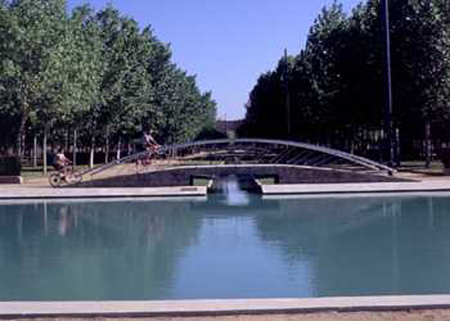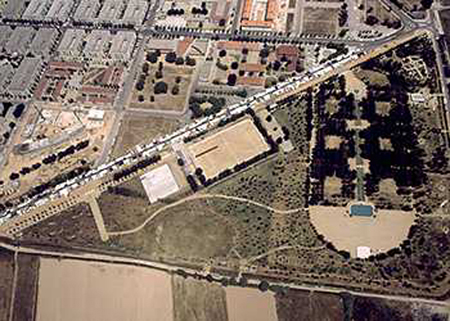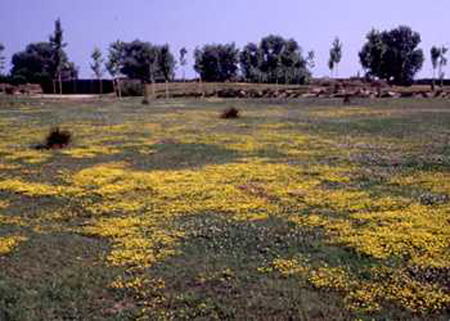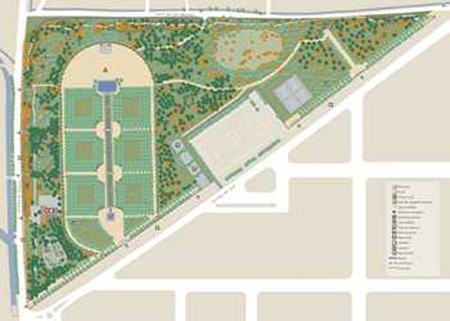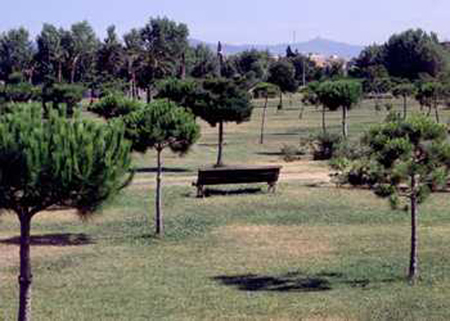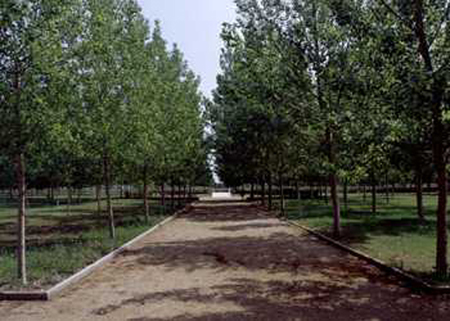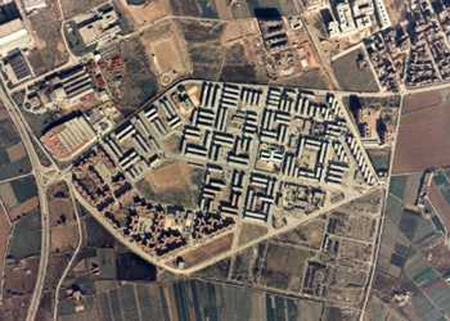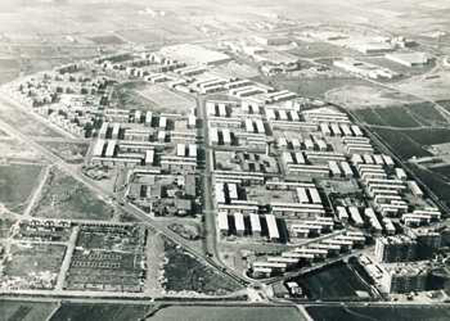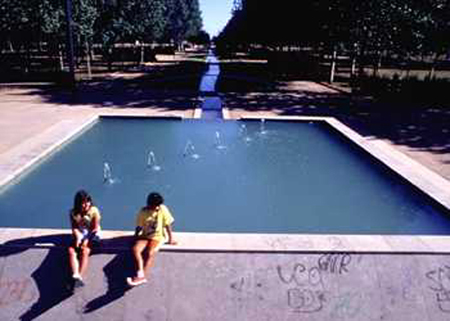Previous state
The park is located on former agricultural land, which is still a feature of the area of Marina del Prat. Nevertheless, the decline in agriculture led to changes in the use of land and benefitted property development and the establishment of metropolitan infrastructures and facilities such as Barcelona international airport at El Prat.The history of the park is closely linked to the district of Sant Cosme, to which it owes it existence in part. In 1965, the Obra Sindical del Hogar (Union Housing Committee) began the construction of this district in an agricultural zone near the airport. When the foundations for the housing had been laid and the future streets asphalted, work came to a standstill because of the proximity of the airport, and continued towards the north. The abandoned plots deteriorated into dumping grounds for rubble and refuse and were finally overrrun by rats.
Aim of the intervention
In 1982, the Ministerio de la Vivienda (Ministry for Housing), which owned the site, decided, together with El Prat Municipal Council and the residents of the Sant Cosme district, to build a park there, thus avoiding the dangers presented by the land as a permanent source of infection. Sant Cosme had all the characteristic features of the marginalised suburbs of Barcelona: far from the urban weave of El Prat, lacking in internal transport connections with the rest of its inhabitants and built on a delta, which was very damp and unsuitable for housing.With the creation of the autonomous communites, the park became the property of the Catalan government, La Generalitat, and subsequently of El Prat Municipal Council which converted it into a metropolitan park run by the Mancomunitat de Municipis de l'Àrea Metropolitana de Barcelona (Association of Municipalities of the Metropolitan Area of Barcelona).
Description
The Parc Nou del Prat is the supreme example of the parks on the Llobregat Delta. Its site, located to the south of the town, on the right bank of the river, is still part of one of the most important natural wetlands in Catalonia, set in a landscape of marshes, ponds, pinewoods, beaches and agricultural zones, which merge with industrial and service infrastructures.The park is located on the southern periphery of El Prat, next to the road leading to the beaches, adjacent to the districts of Sant Cosme and La Granja and very close to the airport.
The present appearance of the park is the result of a number of phases (the initial one and three subsequent ones) and there are plans to embark on at least another. Its triangular layout, includes two zones with different uses and characteristics: the central part which is enclosed and in which a dense poplar grove predominates, and the perimiter, which is more open and features abundant pines.
Paths, water and plants make up the most enclosed part of the park. A double walkway, with a channel of water running through the middle, is the main avenue which forms, together with the paths that cross it, six large fields where the poplars grow. At the end of the avenue, there is a large semicircular esplanade, which is highly suitable for holding public events.
The pine forest is a more open space which surrounds and protects the central poplar grove. The area of pines, which is bounded by the Carretera de l'Aviació, is the best equipped (children’s park, restaurant and picnic area) and the one which attracts the most users. Behind the sports courts, a group of riverside trees is arranged in a large ellipse, on a lower level than the park, populated by reeds, rushes and lilies. It is a space with indigenous vegetation which was already on the site, and particular care has been taken to preserve it.
Assessment
The park's main function is to bring users closer to nature and to be consistent with the needs of leisure and recreation.The planned intervention became a valid alternative to the ecological recovery of the Baix Llobregat, and also to the needs of the urban population of the surrounding area, which had always lacked large green spaces for public use.
[Last update: 02/05/2018]


